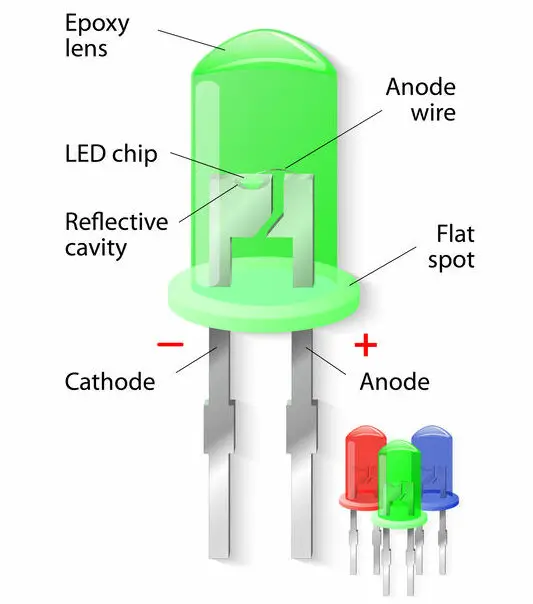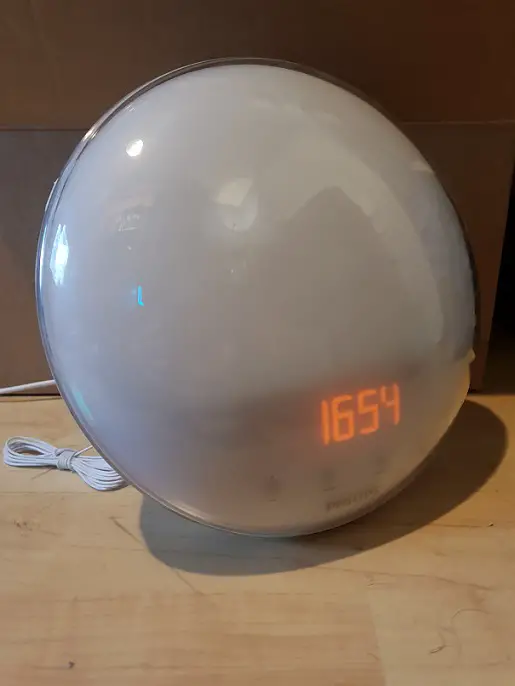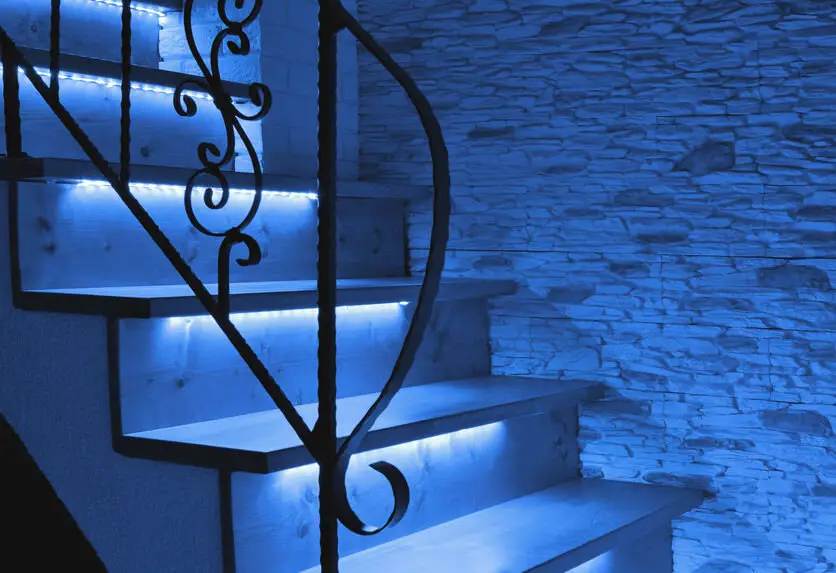Are LED Lights Waterproof?
If you’re ever in the process of installing LED lighting in areas with a lot of moisture or are otherwise worried about the safety of your lights you may be wondering if LEDs are waterproof or not.
This is a valid concern since LEDs are electronic devices which do not normally fare well against water since it normally leads to short circuits or other electrical dangers.
LED lighting can be waterproof but not all of it is. The electroluminescent process LEDs use to create light cannot occur when in direct contact with water, but this problem is avoided by putting the LED in a waterproof casing. LEDs that are rated IP68 are classed as waterproof.
Going forwards from this we will explain IP ratings and how you can use them to differentiate between waterproof, water-resistant and non-resistant LEDs.
Why LEDs Need Extra Protection To Be Waterproof
Firstly we will look at how LEDs function in the first place. LEDs function based on a property called “electroluminescence“.
Electroluminescence can be defined as the process of a material producing photons (light particles) as the result of an electrical current passing through it.

The material LEDs use for this purpose is usually some sort of semiconductor.
A semiconductor is simply a material that’s too conductive to be an insulator and too insulating to be a conductor. It falls somewhere in between those categories. The most commonly used semiconductors in LEDs are usually Gallium Arsenide (GaAs) or different variants of silicone.
Now that we know the basic function of LEDs we can tie it back to why it wouldn’t work when in direct contact with water. This has to do with the electrical current that’s required for light production.
While pure water itself isn’t electrically conductive it normally has impurities in the form of minerals and other particles which do conduct electricity. If these were to come in contact with the parts of the LED which produce light it would redirect the electrical current to the water.
The reason this occurs is due to how electricity behaves. Every electrical current is driven by a charge that tries its best to neutralize itself with the least amount of effort required using the path of least resistance.
The intended path for the current to go is through the semiconductor, which simultaneously causes it to produce light. But if the current instead is presented with the option of entering water instantly and neutralising itself without having to go through the semiconductor it will do just that.
This all boils down to the fact that the electrical resistivity of water is far less than the semiconductor present in the LED.
If the charge doesn’t immediately neutralize itself in the water it will instead use the water to skip past the semiconductor and go straight from the starting point of it to its end without ever crossing it.
This is the very definition of a short circuit and will likely cause things within the LED to break since they can be quite sensitive to large electrical disturbances.
How To Know If LEDs Are Waterproof
So how do we actually know if an LED is waterproof? As previously mentioned, it depends on its IP rating.
IP (Ingress Protection) classification is a simple number labelling system that describes how well a casing of an electronic product tolerates dust and water. This system has ratings from IP00 to IP68, where the first number describes its protection against dust and the second against water.
| Ingress Protection (IP) | First Number (Dust) | Second Number (Water) |
|---|---|---|
| 0 | No Protection | No Protection |
| 1 | Protection against solid objects over 50mm in diameter | Protection against dripping water |
| 2 | Protection against solid objects over 12mm in diameter | Protection against dripping water at an angle of 15° from its normal position |
| 3 | Protection against solid objects over 2,5mm in diameter | Protection against water spraying at any angle up to 60° |
| 4 | Protection against solid objects over 1mm in diameter | Protection against water splashes against the enclosure from any direction |
| 5 | Limited ingress protection against dust | Protection against water projected by a nozzle against enclosure from any direction |
| 6 | Total protection against dust | Protection against water projected in powerful jets against the enclosure from any direction |
| 7 | X | Protection against water submersion up to 1 meter (3 ft 3 in) |
| 8 | X | Protection against long periods of submersion and pressure |
Using this chart you can see how a rating of IP68 would mean that the LED is fully waterproof since it is the highest rating achievable in the IP system.
One thing to keep in mind about the IP system is that this applies to the casing to which the LED is attached. If this casing were to break or otherwise tampered with this value will not mean what it used to anymore.
While the IP rating you need depends entirely on the application the LED is intended for you can’t go wrong with an IP68-rated product.
The Difference Between Water-Resistant And Waterproof LEDs
Now that we know that IP68 means an electronic casing is waterproof we can now look into what ratings would be considered water-resistant and non-water resistant.
Generally speaking the breakdown between the categories non-resistant, resistant and waterproof looks like this:
- Not water resistant: IPX0 to IPX4
- Water-resistant: IPX4 to IPX7
- Waterproof: IPX8
The reason why the first digit is X’d out is that only the second digit matters in terms of the water resistance of the casing. That said, it is uncommon to find products that manage to be resistant to water without being resistant to dust and objects simultaneously too.
The most common IP rating for water-resistant LEDs or other appliances is IP44. This is a normal rating that will protect the LED against the vast majority of water and objects, enough to safely be used outside all year around.
For example, this is a normal IP rating for decorative Christmas lighting meant for outside use. Click here for a full article on Can You Use Indoor Christmas Lights Outside?
As for indoor use, it is common to see appliances with an IP rating of IP20. This means they are not protected against water at all, which makes sense since water isn’t expected in an indoor environment.
That said, any LED rated IP44 or above is classed as water-resistant if not waterproof at IP68.
Submersion Ratings For Waterproof LEDs
Another thing to keep in mind is the ratings that regard submersion for LEDs. While this also tracks back to the IP rating of the LED there are some nuances to it to consider.
When it comes to full submersion IP68 is recommended, but an IP67 would also be suitable as long as the depth of submersion isn’t too deep.
The reason for this is that IP67s are also able to withstand submersion, just at a shallower depth than an IP68-rated LED would.
The tests a product goes through before getting an IPX7 or IPX8 rating are as the following:
- For IPX7 the product is submerged at a depth of 150mm to 1000mm below the surface for 30 minutes.
- For IPX8 the test time and submersion depth are specified by the manufacturer and must be marked somewhere on the product. Normally the depth is upwards of 3m (9.8 ft).
This means that for applications that require only slight submersion, you could opt for an IP67-rated product instead of an IP68. That said, you can’t exactly go wrong by going for an IP68-rated product for this case.
Despite this testing, a product rated IPX7 or IPX8 isn’t automatically compliant with the requirements for IPX4 or IPX5 products. While most of the higher-rated products end up tolerating the same conditions as the lower ones it doesn’t automatically imply compatibility.
This is because the products are tested in very different ways, meaning that it is possible for a product to withstand the IPX8 test but not the IPX5 test. For more details regarding the testing and evaluations of IP ratings, you can read about that here.
Summary
To summarize, LEDs are generally speaking not waterproof. The term waterproof is defined as “impervious to water”, meaning it only makes sense to label IP68 products as such since they are the closest example of that.
A lot of LEDs are not water-resistant either. Most common applications of LEDs see them used in dry indoor environments where water resistance isn’t prioritized. These products normally have an IP rating of IP20.
However, there are LEDs that are meant for outdoor use, which also means they are water-resistant by definition. A normal application of this is Christmas decor lighting, which normally has an IP rating of IP44. This is enough for most common outdoor conditions.



